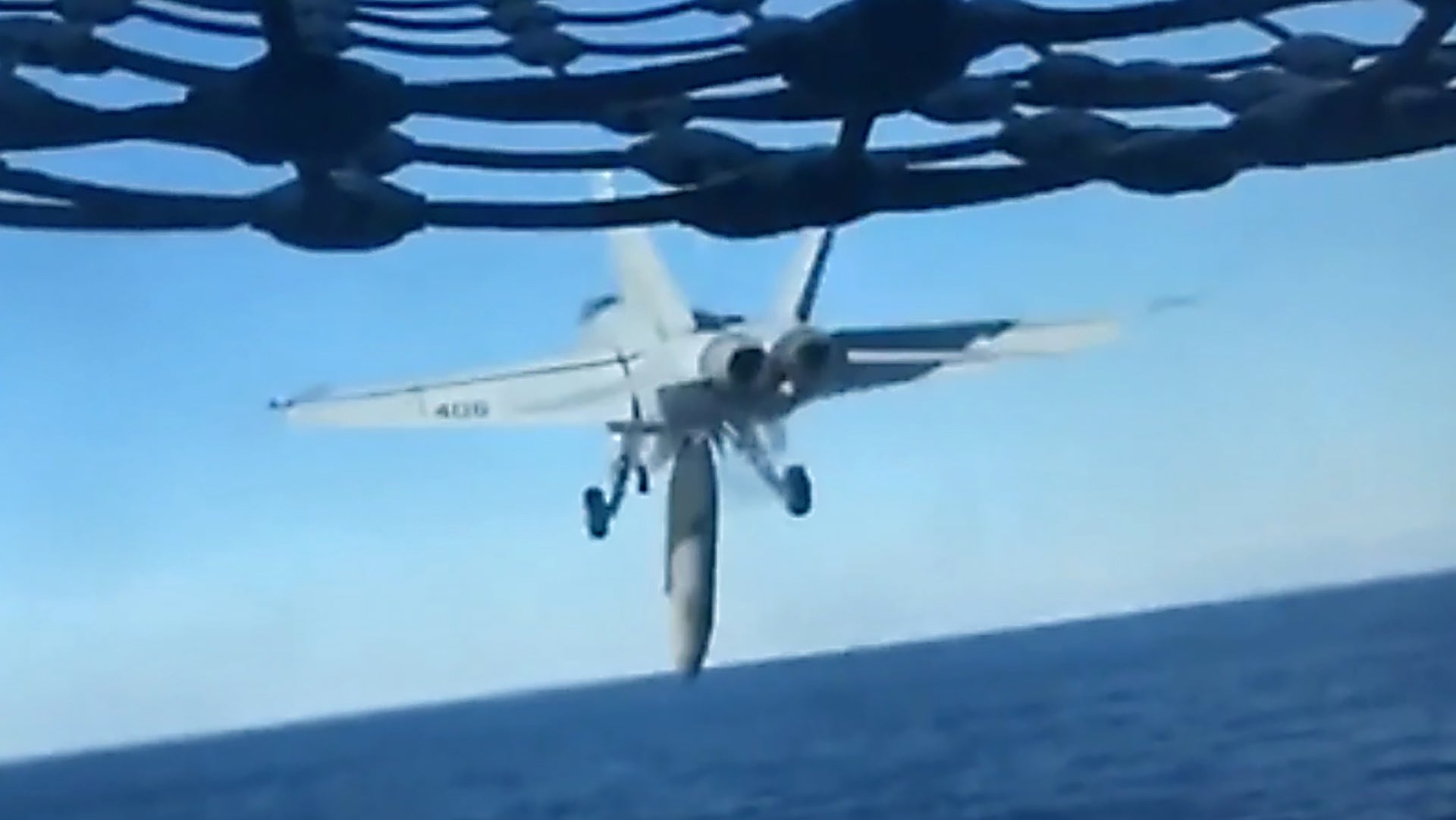Carrier catapult launches are violent affairs. Something of an ultimate E-ticket ride, they accelerate 25-ton flying machines from zero to 130 knots in about 300 feet, resulting in roughly four times the force of gravity being induced on the jet, its crew, and whatever stores it is carrying. In this case, an F/A-18E Super Hornet had a 480-gallon centerline fuel tank attached as it rushed down the catapult track. Then, just after the “thump” of the catapult shuttle hitting the end of the track can be heard, the tank is seen dropping away from the jet. It then tumbles into the sea right in front of the ship, with fuel spilling into the water as the carrier continues to plow ahead. And yes, it is all set to a “Surfing USA” soundtrack with what sound like sailors giving some candid commentary.
You can watch the video here. Because of its odd orientation, here are some screengrabs so you can more clearly see what happened:




It isn’t clear what happened here. It seems as if the tank wasn’t secured properly or an electronic fault caused the jettison. Otherwise, the pilot jettisoned it on command due to an issue, although it doesn’t look like they received a ‘cold cat shot’ in which the catapult does not produce enough forward motion to get the aircraft airborne safely. You can read all about this terrifying situation here.
Regardless, the tank made a quick trip to Davy Jones’ Locker. Thankfully, nobody was hurt.
Such a loss isn’t financially significant in terms of the overall cost of combat aviation, with a drop tank costing thousands of dollars, not hundreds of thousands or even millions of dollars, like some munitions, but this won’t be the case in the future. The Super Hornet is set to receive an advanced Infrared Search and Track (IRST) system mounted in the nose of a 480-gallon tank that will be installed on the aircraft’s centerline station. It will cost exponentially more than its standard gas-carry cousin. In fact, losing the tank with its sensor and computer system, by demand or otherwise, could end up becoming a major mishap depending on just how much the pod costs, in the end.
The Super Hornet’s IRST21 sensor pod is slated to be operational next year. You can read the most in-depth discussion about the upgrade and its capabilities anywhere in this recent War Zone feature.
If anything else, this is a reminder of the bizarre things that can go wrong in an instant while being hurdled off the deck of a moving supercarrier.
Contact the author: Tyler@thedrive.com
